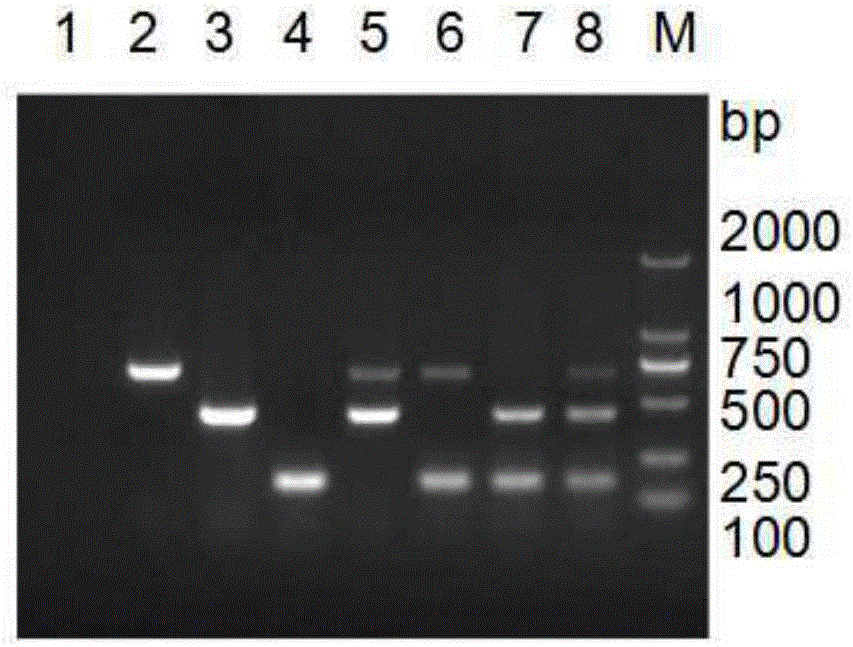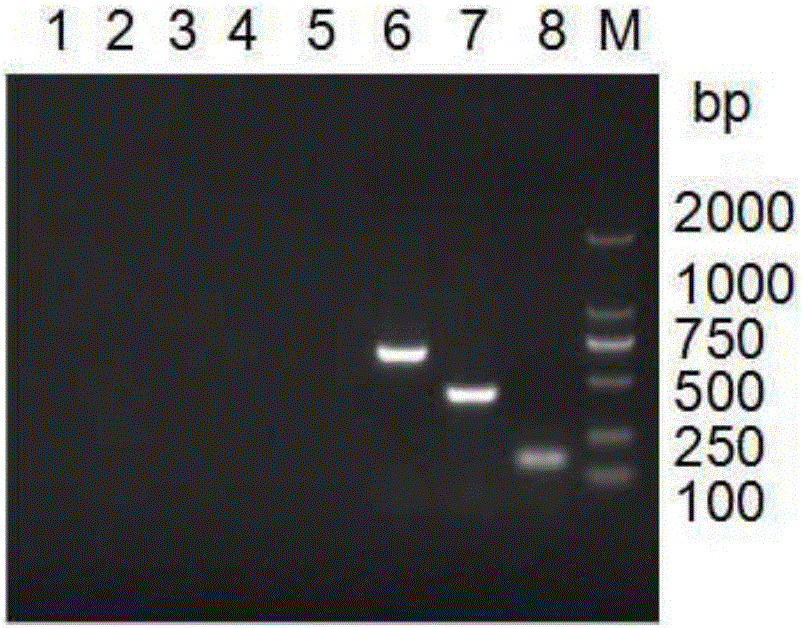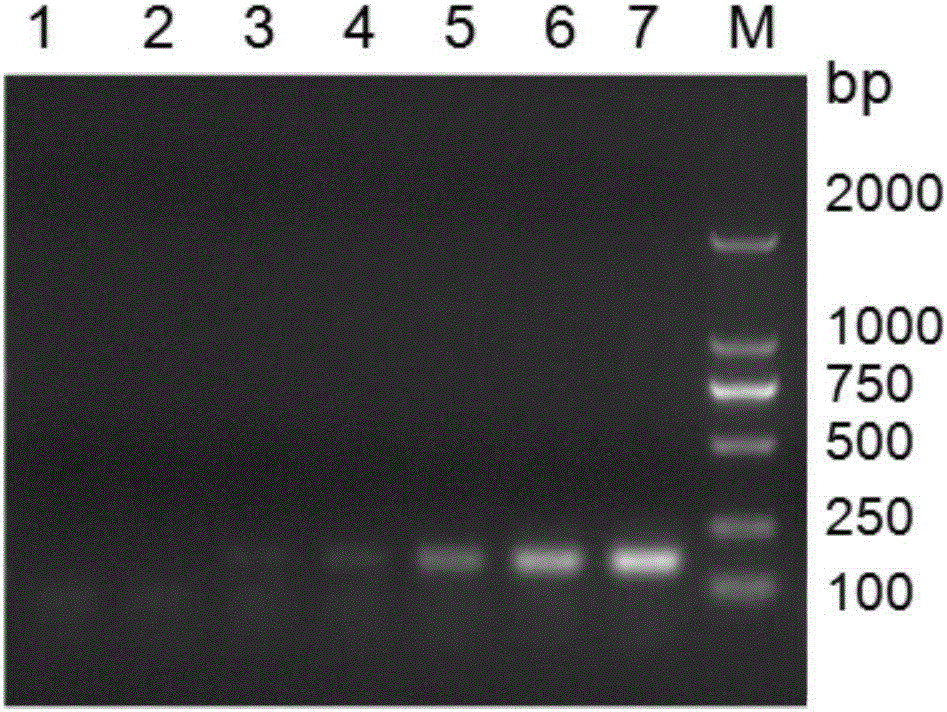Multi-PCR (Polymerase Chain Reaction) specific primer for detecting bacterial enteritis pathogens of pig and application thereof
A bacterial enteritis and specific technology, applied in the field of molecular biology, can solve the problems of target blindness, time-consuming, large amount of reagents, etc., and achieve the effect of high sensitivity and strong specificity
- Summary
- Abstract
- Description
- Claims
- Application Information
AI Technical Summary
Problems solved by technology
Method used
Image
Examples
Embodiment 1
[0037] 1. Design of primers
[0038] The research results of ASIMK.BEJ et al. showed that the gene encoding glucosidase uidA can only be detected in Escherichia coli but not in other intestinal bacteria. Rahn et al. found that the Salmonella invA gene is widely distributed in various serotypes of Salmonella. This gene can encode the surface protein of adsorption and invasion of epithelial cells. This protein is related to the pathogenicity of Salmonella and is distributed in almost all known Salmonella. Not found in non-Salmonella species. The exotoxin secreted by Clostridium perfringens is its pathogenic factor. According to the different types of exotoxin produced, it can be divided into five serotypes: A, B, C, D and E. Among them, α-toxin (C. perfringens alpha toxin (CPA) is a common virulence factor produced by various types of Clostridium perfringens, which can destroy the integrity of the cell membrane and cause cell lysis, thus having the characteristics of cytotoxici...
Embodiment 2
[0051] Example 2 specificity test
[0052] With the presence of Escherichia coli, Salmonella and Clostridium perfringens CVCC12-57 culture fluid as positive controls, the culture fluid of Actinobacillus pleuropneumoniae, Haemophilus parasuis, Streptococcus suis, and Pasteurella suis Carry out specific detection, use the method and primer of embodiment 1, all fail to amplify any band except positive control, positive disease material expands 166bp band, 449bp band and 579bp respectively through PCR, see figure 2 , indicating that the primers and detection method of the present invention can verify and identify whether the sample contains Escherichia coli, Salmonella and Clostridium perfringens.
Embodiment 3
[0053] Embodiment 3 Sensitivity test
[0054] The Escherichia coli, Salmonella and Clostridium perfringens CVCC12-57 strain DNA extracted in Example 1 were respectively made 10 times of gradient dilution with sterilized double distilled water, i.e. 10 9 CFU, 10 8 CFU, 10 7 CFU, 10 6 CFU, 10 5 CFU, 10 4 CFU content of E. coli, Salmonella and 10 9 CFU, 10 8 CFU, 10 7 CFU, 10 6 CFU, 10 5 CFU, 10 4 CFU, 10 3 The Clostridium perfringens DNA of the CFU content is used as a template, and each dilution takes 1 μ L as a template, and according to the method in Example 1, each pathogen is detected for a single pathogen and the simultaneous presence of three pathogens, and a negative control is set. Observe the results of the positive bands, and calculate the sensitivity based on the highest dilution of the template used for the positive expected bands. The results show that the minimum detection concentrations of single pathogenic Escherichia coli, Salmonella and Clostridium ...
PUM
 Login to View More
Login to View More Abstract
Description
Claims
Application Information
 Login to View More
Login to View More - R&D
- Intellectual Property
- Life Sciences
- Materials
- Tech Scout
- Unparalleled Data Quality
- Higher Quality Content
- 60% Fewer Hallucinations
Browse by: Latest US Patents, China's latest patents, Technical Efficacy Thesaurus, Application Domain, Technology Topic, Popular Technical Reports.
© 2025 PatSnap. All rights reserved.Legal|Privacy policy|Modern Slavery Act Transparency Statement|Sitemap|About US| Contact US: help@patsnap.com



